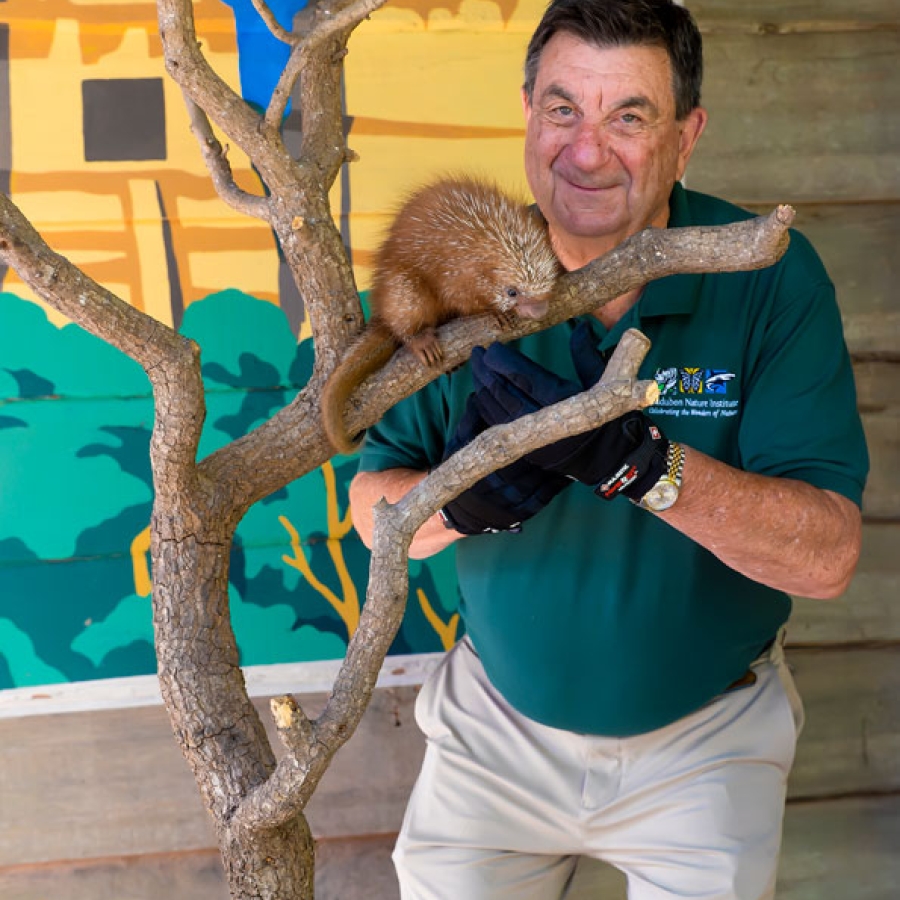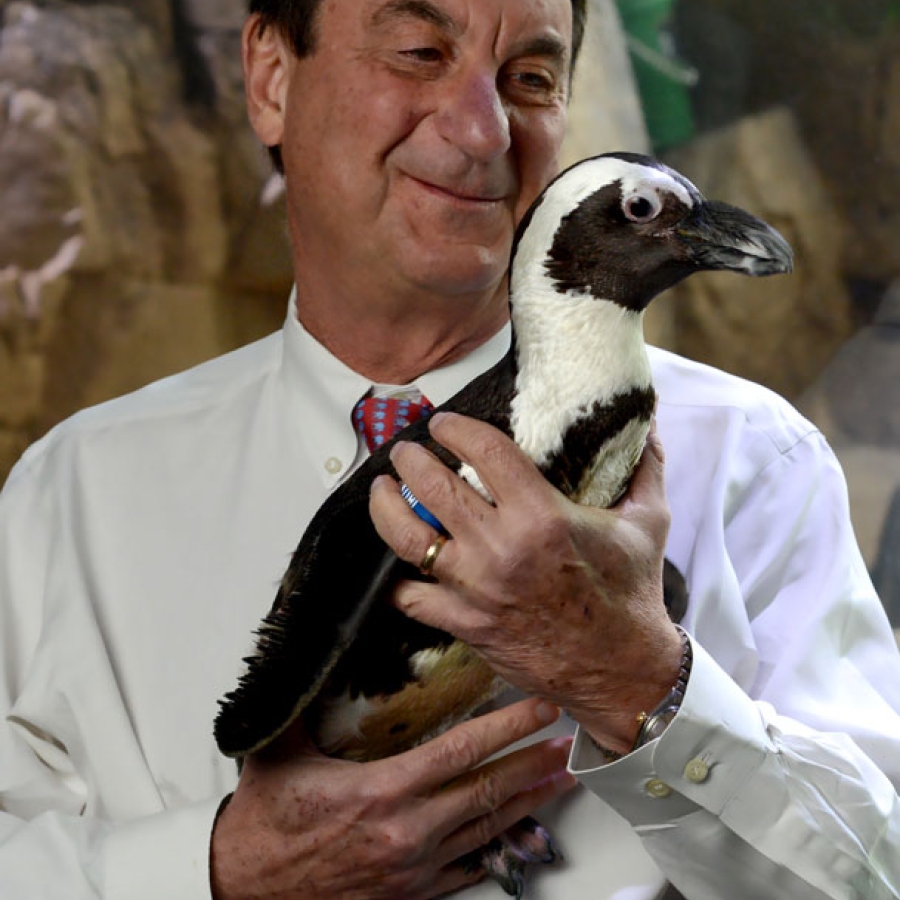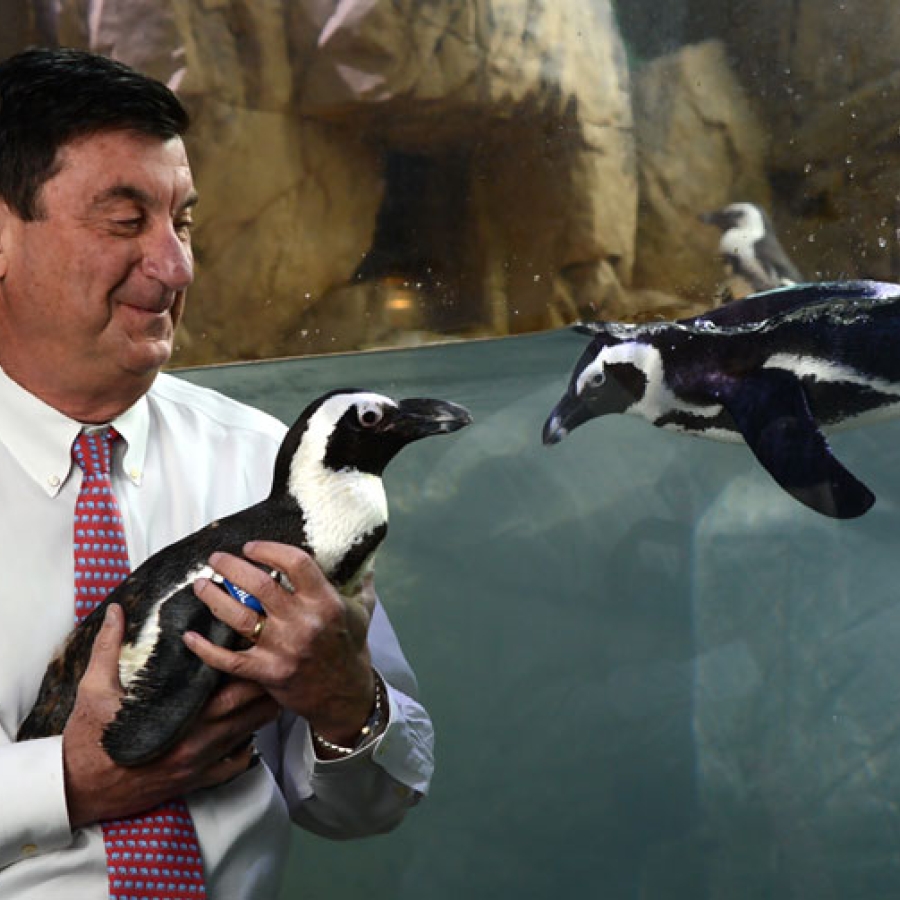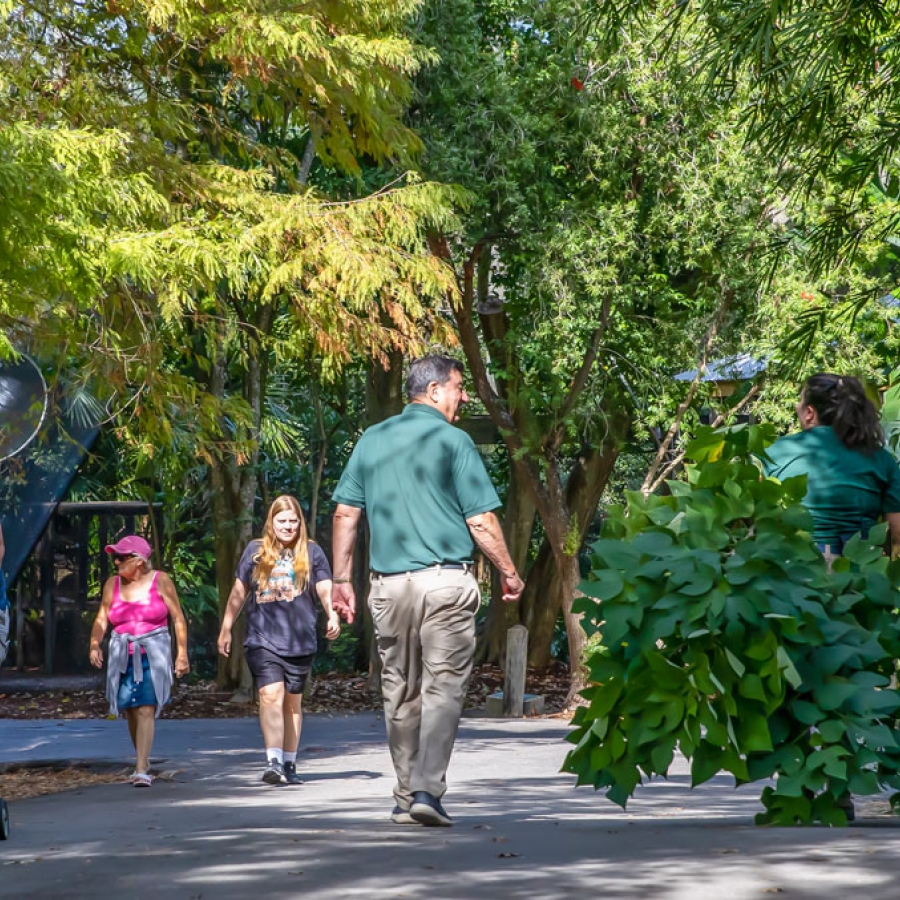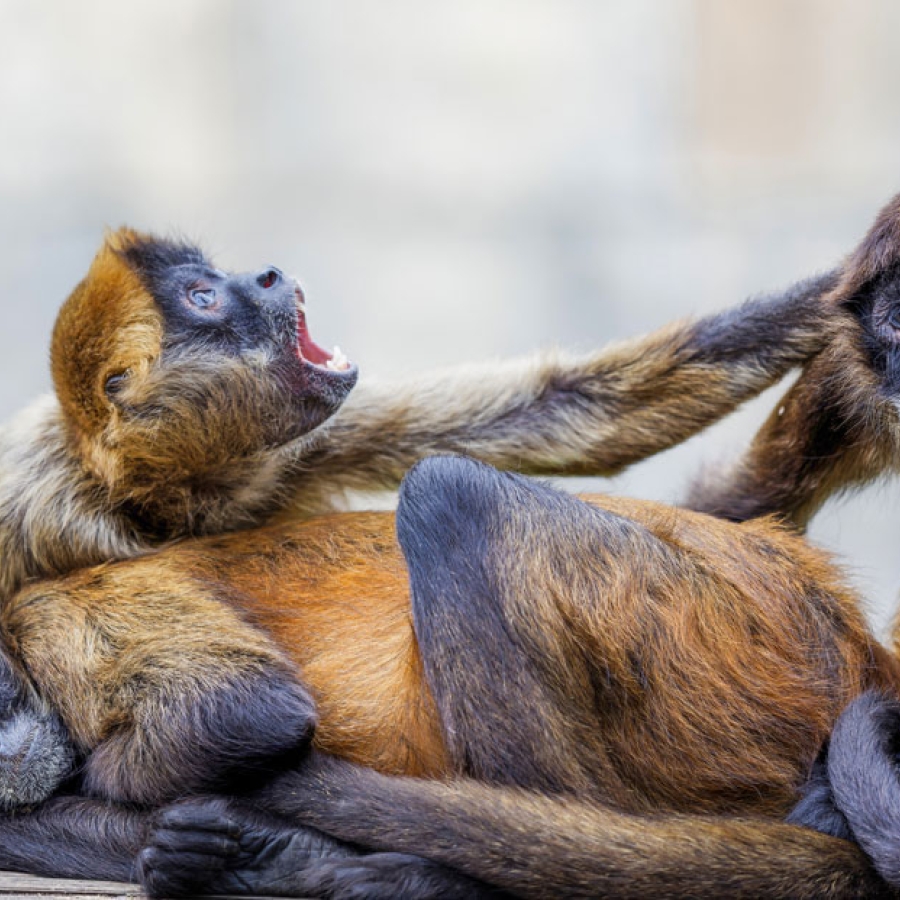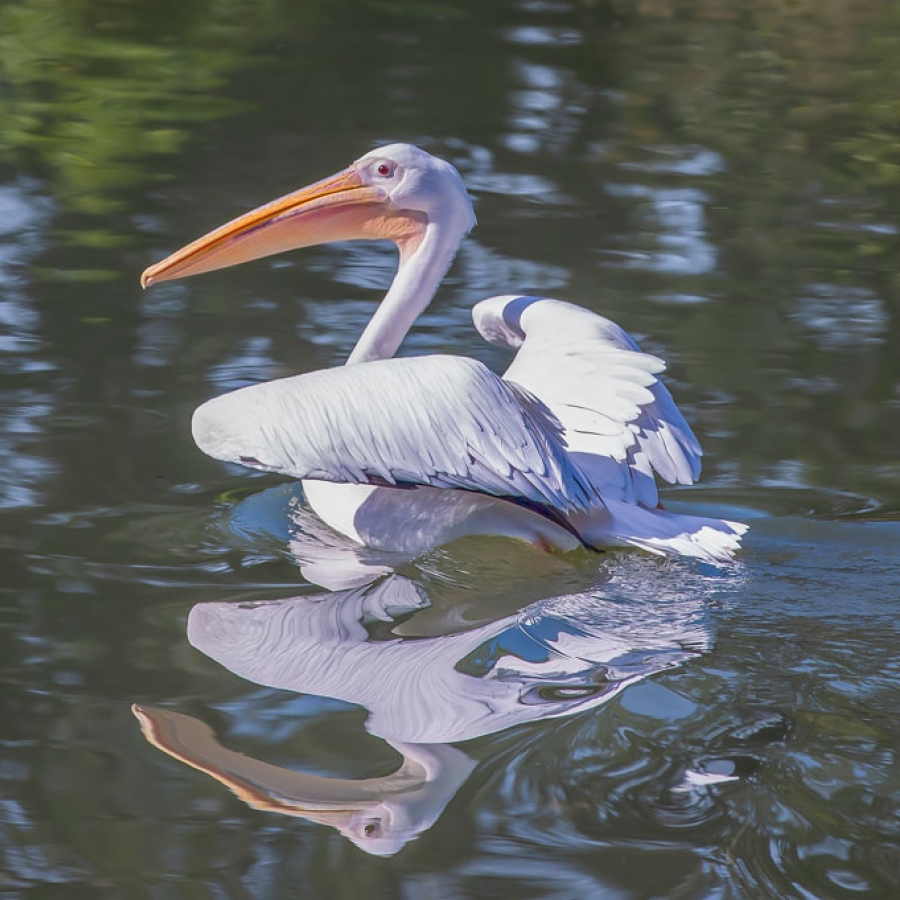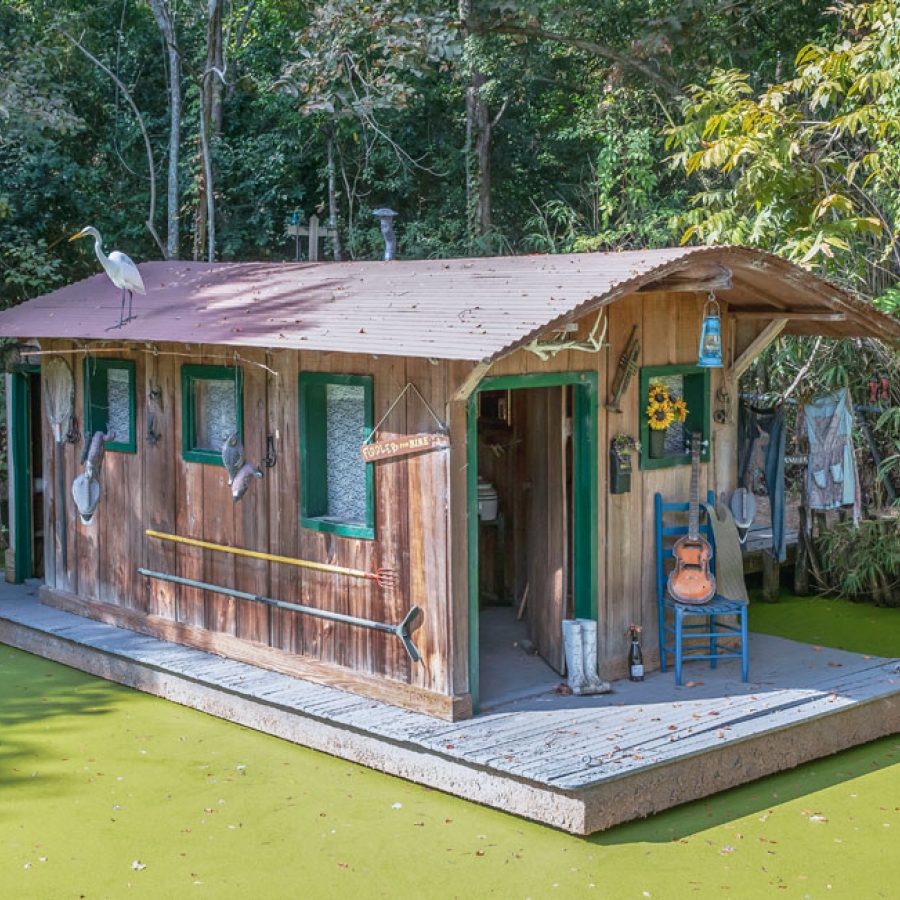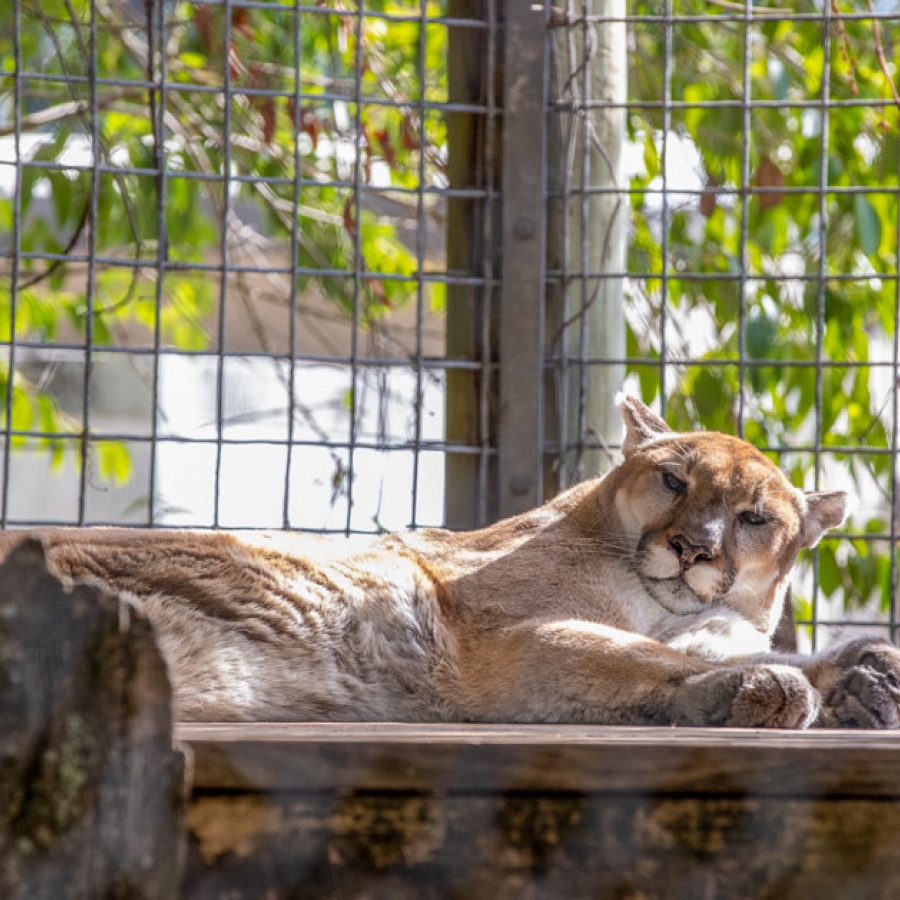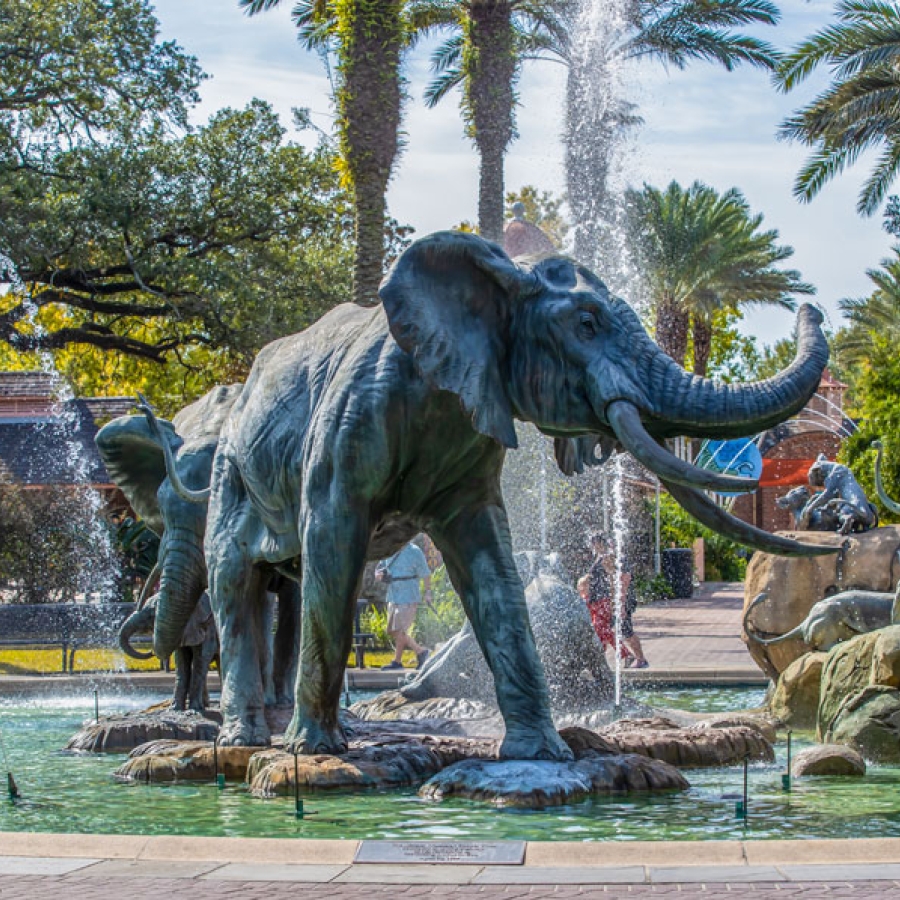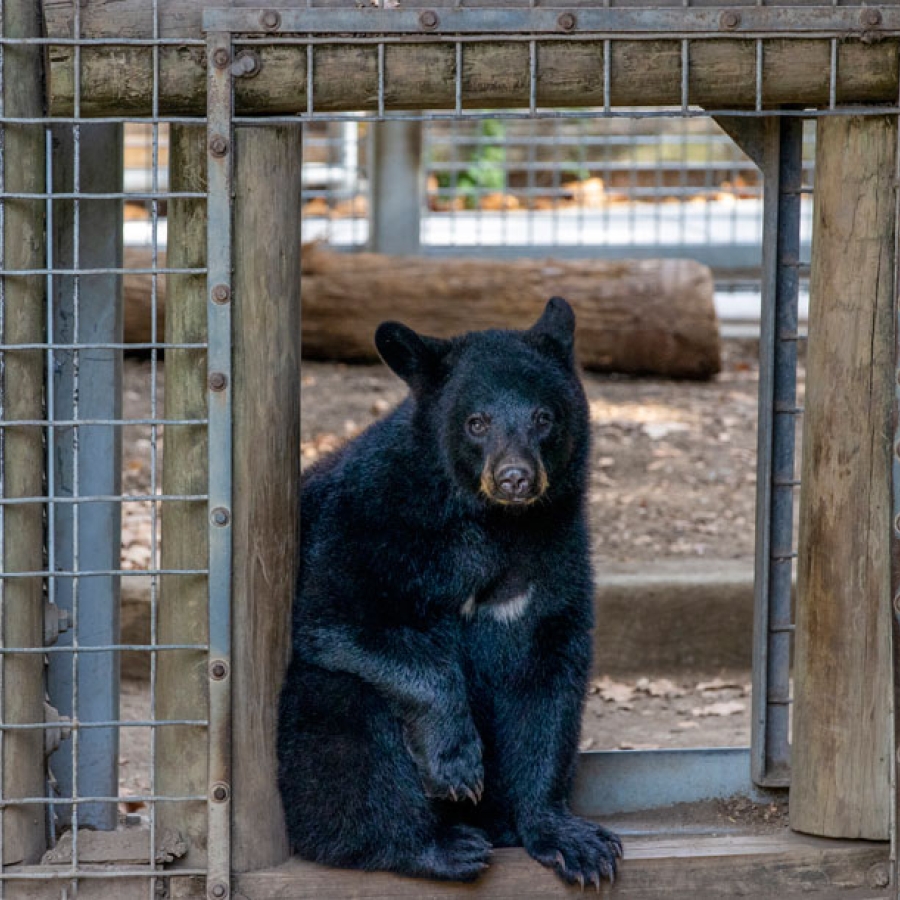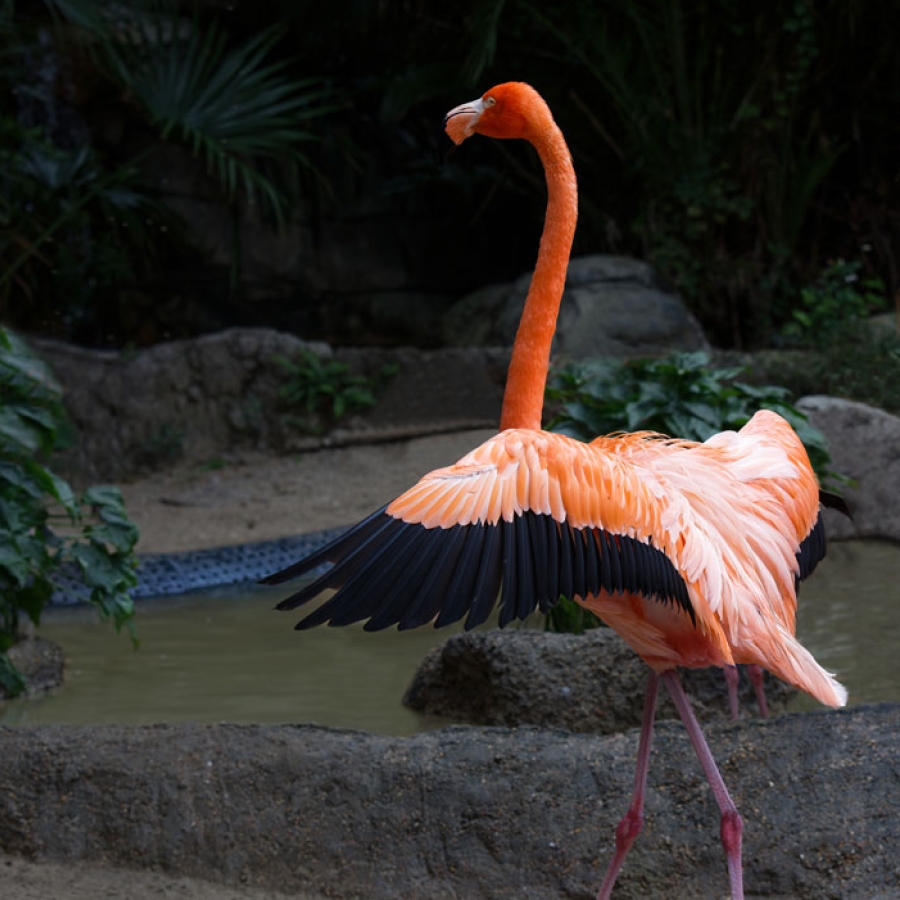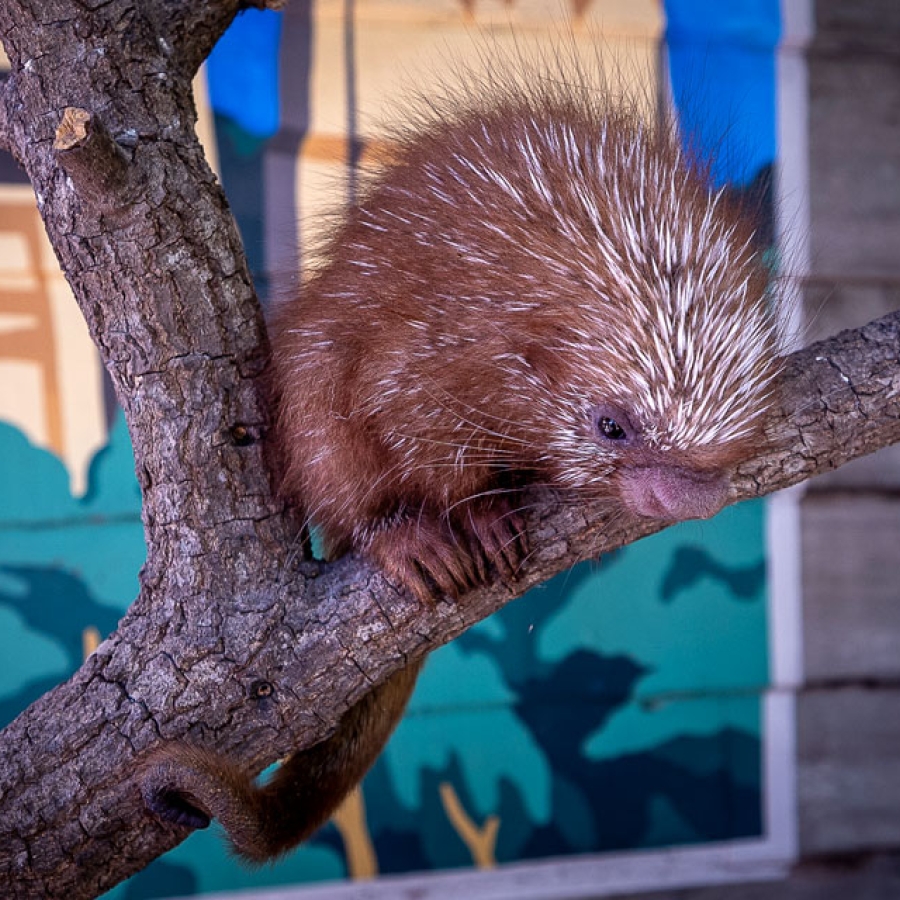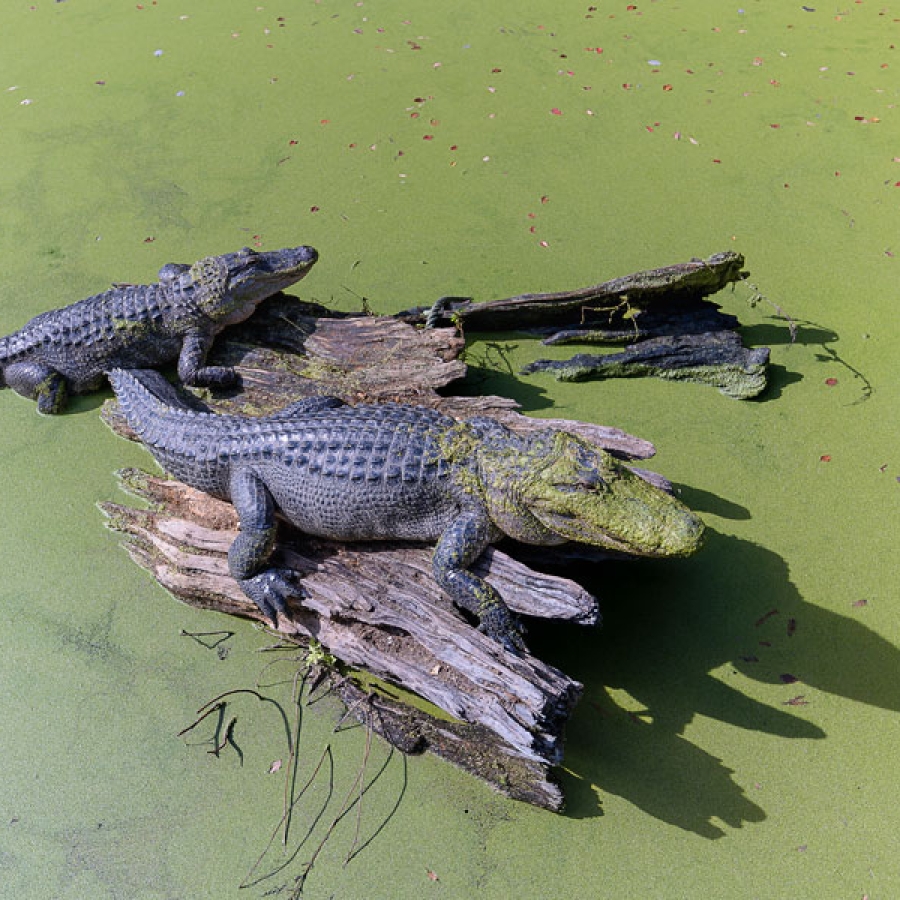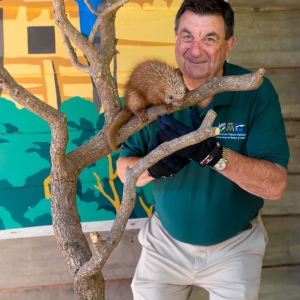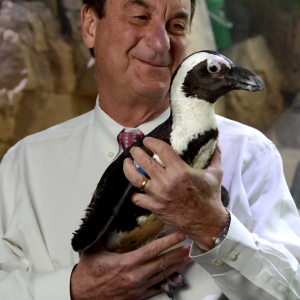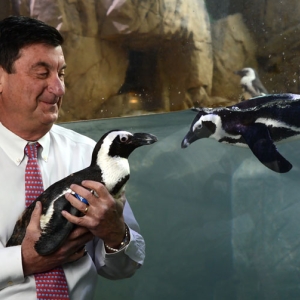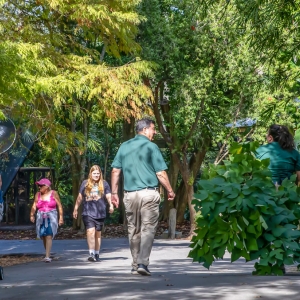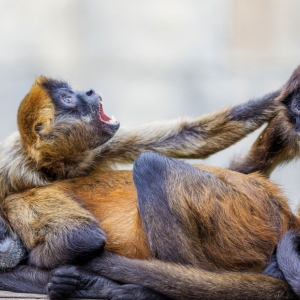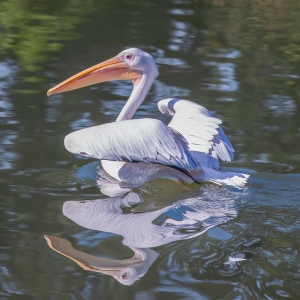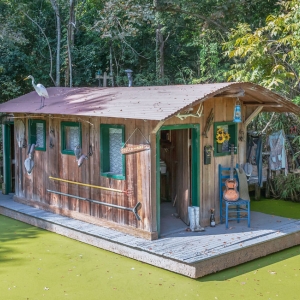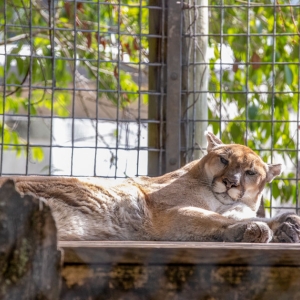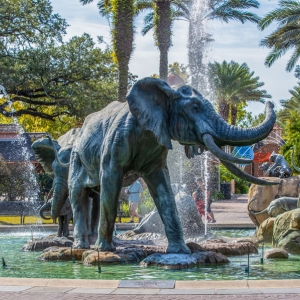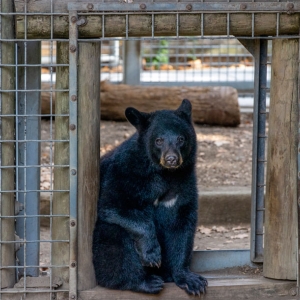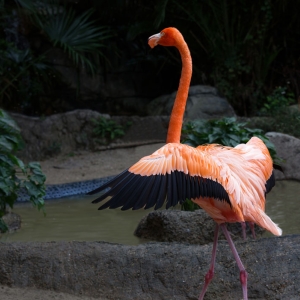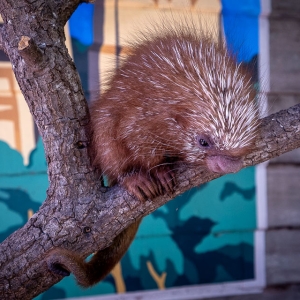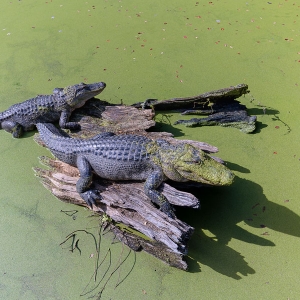Photos by: P.J. Hahn, Tracy Fabacher Marcev
The Visionary Leader of Audubon Nature Institute Who Has Guided the Venerable Organization as a Champion for Animals Prepares to Retire and Will Continue to Rally for Wildlife
Animal enthusiasts usually have a few pets in their care—a couple of dogs or cats, a pair of birds, perhaps even a horse—but the mind-blowing menagerie under Ron Forman’s watch includes thousands of remarkable animals, ranging from the African Lion to the Asian Forest Scorpion, from the Malayan Tiger to the Moon Jellies, from the Komodo Dragon to the Caribbean Flamingo. As President and CEO of Audubon Nature Institute, Forman is the overseer of an impressive array of conservational and environmentally-focused nature museums and attractions located in New Orleans and its surrounds that includes Audubon Zoo, Audubon Aquarium and Audubon Insectarium, all residing under the nonprofit’s umbrella. Forman is retiring at the end of 2024 and will be forever heralded as the hero responsible for transforming Audubon Zoo from an animal hellhole into an exemplary world-class zoo and a New Orleans treasure beloved by locals and tourists, which he accomplished during the earlier part of his illustrious career.
“Back in the early 70s I was a 24-year-old graduate student at Tulane when Mayor Moon Landrieu spoke to the class about New Orleans and giving back to your city; he compared it to the Peace Corps,” says Forman. “He wanted to put young people in each department to bring new energy and new thinking to help government work. I sat there and listened to him and thought, ‘I think he’s talking to me!’ [Laughs.] I liked this great idea of taking a couple of years to learn about the city I grew up in, the city I love.” Forman heeded the call and began working in the mayor’s office in New Orleans. He became the City Hall liaison for Audubon Park and Zoological Garden in 1972, advanced to Deputy Director in 1973 and in 1977 was christened Executive Director. Underway was a Herculean effort to overhaul the zoo—animals existed in such pitiful environments and filthy cages that Audubon was dubbed an “animal ghetto”—as the federal government threatened to shut it down.
Forman rolled up his sleeves and put the pedal to the metal, driven by a powerful resolution to better the lives of the zoo’s animals. He fundraised, hired talented people, bridged together zoo and city officials, and even sought advice from legendary zoologist Marlin Perkins of the documentary television series Mutual of Omaha’s Wild Kingdom. “Marlin Perkins was my mentor and role model,” says Forman. “You would walk down the street with him and everyone wanted to talk to him. He was personable and loved to share his passion for saving wildlife.” Forman credits Perkins for instilling that same passion for saving wildlife in him.
The results for Audubon were spectacular. In late 1978, the Asian Domain—where Asian elephants, Asian Lions, sun bears and other exotic animals got larger, more natural spaces to live in—was the first phase of the improved zoo to open, followed by the World of Primates, the Grassland Exhibit, the Louisiana Swamp and the Jaguar Jungle. Under Forman’s helm, by 1988 Audubon was removed from the control of a poorly performing city department and turned into the Audubon Nature Institute, a nonprofit organization that today includes the Zoo, the Aquarium and the Insectarium along with Audubon Park, Woldenberg Riverfront Park, the Audubon Louisiana Nature Center and more. “What we do in caring for animals is all about saving animals from extinction, conserving their natural habitats and creating a love for animals through education,” says Forman. “I thought I’d stay for a couple of years then go get a real job. 52 years later, I’m still waiting to get that real job!”
Throughout his “real job” in furthering causes for animals, nature and conservation, Forman has enjoyed extraordinary experiences. “A real passion of mine was dealing with ecotourism particularly in East Africa with warriors like the Maasai and the Samburu,” says Forman. “There was a major battle going on regarding protecting habitats, and their long history as cattle ranchers was to meander around and often that destroyed habitats. I had the chance to work on saving animals and wildlife with ecotourism, and working with and looking at some of the most incredible animals in the world that were struggling to survive, and being a part of saving that ecosystem. The wonderful warrior people have a love for what they do but needed to have a future, and part of that future was having ecotourism.”
Of the many magnificent animals he’s been privileged to witness, it’s the great apes that have enchanted Forman. “The gorillas and the orangutans are some of my favorites,” says Forman. “They look in your eyes, you look in their eyes, we’re both thinking and hopefully we’re thinking something together that’s good for them, the species, and their future. Their intelligence, family structure and how they work together really show how we’re related to them. They’re wonderful animals. Watching orangutans watch people is incredible. We had a construction crew working and one worker took a paper cup, went to the water, pushed the water, drank the water, wadded it up and threw it. Somehow the orangutan got the paper cup, went to his water, filled it up and threw it down. You see the similarities of DNA between people and animals.” Forman has served on the advisory committee for Chimp Haven, located in Keithville, Louisiana. “This national program takes chimpanzees out of research centers and those small cages they’re locked in and rehomes them to live out their lives in natural green spaces with trees to climb.”
Miracles abound at Audubon and Forman has witnessed plenty, such as the births of animals. “On a normal day you watch thousands of kids having fun running around and on a special day you see a giraffe being born, and immediately jumping up and running!” says Forman. “Or a baby orangutan is born. All animal births are special. It’s not a bad place to work! The most fascinating things are happening at our Species Survival Center, which is about 1,200 acres of land set aside just to save species from extinction. We also have the Center for Research of Endangered Species and we have the Frozen Zoo, where our scientists collect eggs and semen from endangered animals and create the embryo outside of the uterus, freeze it and use a surrogate animal to implant the embryo and give birth to that endangered animal. We’ve been to Africa trying to do it, and it’s worked a few times in captivity. Some of the experiences were the first time ever. With the endangered African wildcat, a domestic cat was used as the surrogate mother; it was all over the national news. Watching the scientific and research side of saving species from extinction and that animal birth is extremely fascinating. An African animal called the bongo antelope is extinct in Mount Kenya and we were trying to bring it back and used eland antelope, a similar animal, as a surrogate mother; we implanted the embryo and it gave birth. Immediately the mother and child bonded, but we were watching the eland looking at the baby bongo thinking, ‘Is that mine? That’s the ugliest thing I’ve ever seen!’” [Laughs.]
An animal that made a huge splash at Audubon Zoo was Spots, the ethereal white alligator with beautiful blue eyes found in a Louisiana swamp in 1986; the rare leucistic reptile’s reduced pigmentation was due to a genetic mutation. “This guy was poaching on what happened to be the land of the chairman of Audubon’s board, Leighton Steward, who was also the chairman of Louisiana Land and Exploration Company,” says Forman. “He gave the poacher that wanted to sell to us a choice: hand over the animals or Wildlife & Fisheries will come get them. We got this one-of-a-kind baby white alligator. They might exist more than we think but don’t survive because they can’t camouflage, so a bird or something will get them. Leighton came to the dedication celebrating the white alligator on July 4th and said, ‘I have a special present for Ron,’ and he hands me a box. I said, ‘What’s this?’ The TV cameras were there, I opened it, and it was three baby alligators; one white, one red and one blue. He painted the red and blue ones! I said, ‘Whoa! They come in red and blue too?’” [Laughs.] An awe-inspiring behind-the-scenes look at certain animals at Audubon is available through Audubon’s Wild Encounters, where visitors learn fascinating details from zookeepers about the animals and the efforts being made towards their conservation, including at the zoo’s Sea Lion Splash, the aquarium’s Penguin Party and the insectarium’s Butterfly First Flight. “At these unique animal encounters the keepers have a chance to talk to guests while they’re holding a mammal, bird or reptile,” says Forman. “It’s wonderful for the visitor family to interact and take pictures of that lifetime experience they shared together, and the staff really enjoys sharing their passion for the animals.”
Unsurprisingly, Forman grew up with animals. “We had a number of dogs, mostly rescues,” says Forman. “I’ve always had a dog; dogs and cats are part of our families. The love you give them and the love they give back significantly adds to the quality of people’s lives and helps develop their souls. It creates love in a person that goes in many different directions. Everyone needs a dog! We lost one of our dogs about a year ago and my son lives in a small apartment in New Orleans so we always have his mixed-breed rescue, Blue, our grand dog.” Forman and his wife Sally love having their grand dogs as frequent guests and will travel far for their grand dogs. “We went to New York to babysit my daughter’s dog Leo, a Cavapoo. We’re constantly in demand for caring for all our grand dogs and of course we love doing it.”
Forman has garnered many achievements and awards, including being named Man of the Year by Big Brothers Big Sisters and being President and the longest-serving Director of the Association of Zoos and Aquariums. A big career highlight for him has been inspiring young people to bond with animals and even forge their own careers in animal sciences. “There’s children that already have a love of animals and want to make a profession out of it,” says Forman. “Many of our young volunteers go on to become scientists or directors of other zoos such as San Francisco, Atlanta and Phoenix. Then there’s kids who grew up without the love of nature around them; they live in concrete jungles and they’re afraid of getting in with an animal, so getting them interacting and touching animals in the petting zoo often leads to them brushing and hugging the animals. Seeing that light go off in a child’s mind about the beauty of nature is tremendously rewarding. And we’re not yet winning the battle to protect wildlife for future generations. Animal habitats are still being destroyed. Species like the rhinoceros will be extinct in our lifetime. The mountain gorilla and others are threatened with extinction so there’s much more work to be done to protect wildlife and the environment. Imagine growing up without the love of nature, without the beauty of imagination, from wildlife to flowers to butterflies to trees to migration to springtime—it is part of our soul. We have a responsibility to give that to future generations.”
Forman encourages those interested in conservation to learn all they can about Louisiana’s wetlands so they can participate in their protection. “With conservation we often think of Africa or India but our own wetlands are one of the most fragile ecosystems in the world, as fragile as the Serengeti,” says Forman. “We need to protect our wetlands to protect habitats and the ecosystem for animals because without it, the animals don’t exist. Not only will dolphins, sea turtles and manatees be protected, which is done through Audubon’s Coastal Wildlife Network, but so will the fish industry. We want healthy crabs, oysters, shrimp, redfish and speckled trout. Losing our wetlands would have an incredibly negative impact on the people and the wildlife of Louisiana.”
While a nationwide search for his replacement proceeds, Forman is reminiscing about Audubon’s milestones and looking forward to its bright future. “After 52 years of having the most incredible career one could wish for, and its impact personally on myself, my family, my friends, my community and the animals for the better, I’m excited for what lies ahead for Audubon,” says Forman. “I love New Orleans, I grew up in New Orleans and I’ll die in New Orleans, so working together with others that love this city to make it all we want it to be has been great. Audubon’s board has an incredible partnership with the staff on working with our elected officials, volunteers, donors and our animals. We want another leader passionate about wildlife who’ll dream the big dream, not just an operator. The goal is to keep growing, not just maintain. Audubon went from one bad zoo to ten facilities. We’re not slowing down.” And although retirement nears for the man who comes to mind when The Meters’ joyous ode to Audubon Zoo, “They All Ask’d for You,” is played—which always puts a smile on Forman’s face and gives him a reason to dance—Forman isn’t leaving zoo life completely. “I’m fortunate I’ll stay in a position like emeritus. When asked, I’ll help raise money and carry the message about the greatness of Audubon.”
For more info, please see audubonnatureinstitute.org, @AudubonNature, @auduboninstitute, auduboncwn.org, facebook.com/audubonnatureinstitue, chimphaven.org
Animal enthusiasts usually have a few pets in their care—a couple of dogs or cats, a pair of birds, perhaps even a horse—but the mind-blowing menagerie under Ron Forman’s watch includes thousands of remarkable animals, ranging from the African Lion to the Asian Forest Scorpion, from the Malayan Tiger to the Moon Jellies, from the Komodo Dragon to the Caribbean Flamingo. As President and CEO of Audubon Nature Institute, Forman is the overseer of an impressive array of conservational and environmentally-focused nature museums and attractions located in New Orleans and its surrounds that includes Audubon Zoo, Audubon Aquarium and Audubon Insectarium, all residing under the nonprofit’s umbrella. Forman is retiring at the end of 2024 and will be forever heralded as the hero responsible for transforming Audubon Zoo from an animal hellhole into an exemplary world-class zoo and a New Orleans treasure beloved by locals and tourists, which he accomplished during the earlier part of his illustrious career.
“Back in the early 70s I was a 24-year-old graduate student at Tulane when Mayor Moon Landrieu spoke to the class about New Orleans and giving back to your city; he compared it to the Peace Corps,” says Forman. “He wanted to put young people in each department to bring new energy and new thinking to help government work. I sat there and listened to him and thought, ‘I think he’s talking to me!’ [Laughs.] I liked this great idea of taking a couple of years to learn about the city I grew up in, the city I love.” Forman heeded the call and began working in the mayor’s office in New Orleans. He became the City Hall liaison for Audubon Park and Zoological Garden in 1972, advanced to Deputy Director in 1973 and in 1977 was christened Executive Director. Underway was a Herculean effort to overhaul the zoo—animals existed in such pitiful environments and filthy cages that Audubon was dubbed an “animal ghetto”—as the federal government threatened to shut it down.
Forman rolled up his sleeves and put the pedal to the metal, driven by a powerful resolution to better the lives of the zoo’s animals. He fundraised, hired talented people, bridged together zoo and city officials, and even sought advice from legendary zoologist Marlin Perkins of the documentary television series Mutual of Omaha’s Wild Kingdom. “Marlin Perkins was my mentor and role model,” says Forman. “You would walk down the street with him and everyone wanted to talk to him. He was personable and loved to share his passion for saving wildlife.” Forman credits Perkins for instilling that same passion for saving wildlife in him.
The results for Audubon were spectacular. In late 1978, the Asian Domain—where Asian elephants, Asian Lions, sun bears and other exotic animals got larger, more natural spaces to live in—was the first phase of the improved zoo to open, followed by the World of Primates, the Grassland Exhibit, the Louisiana Swamp and the Jaguar Jungle. Under Forman’s helm, by 1988 Audubon was removed from the control of a poorly performing city department and turned into the Audubon Nature Institute, a nonprofit organization that today includes the Zoo, the Aquarium and the Insectarium along with Audubon Park, Woldenberg Riverfront Park, the Audubon Louisiana Nature Center and more. “What we do in caring for animals is all about saving animals from extinction, conserving their natural habitats and creating a love for animals through education,” says Forman. “I thought I’d stay for a couple of years then go get a real job. 52 years later, I’m still waiting to get that real job!”
Throughout his “real job” in furthering causes for animals, nature and conservation, Forman has enjoyed extraordinary experiences. “A real passion of mine was dealing with ecotourism particularly in East Africa with warriors like the Maasai and the Samburu,” says Forman. “There was a major battle going on regarding protecting habitats, and their long history as cattle ranchers was to meander around and often that destroyed habitats. I had the chance to work on saving animals and wildlife with ecotourism, and working with and looking at some of the most incredible animals in the world that were struggling to survive, and being a part of saving that ecosystem. The wonderful warrior people have a love for what they do but needed to have a future, and part of that future was having ecotourism.”
Of the many magnificent animals he’s been privileged to witness, it’s the great apes that have enchanted Forman. “The gorillas and the orangutans are some of my favorites,” says Forman. “They look in your eyes, you look in their eyes, we’re both thinking and hopefully we’re thinking something together that’s good for them, the species, and their future. Their intelligence, family structure and how they work together really show how we’re related to them. They’re wonderful animals. Watching orangutans watch people is incredible. We had a construction crew working and one worker took a paper cup, went to the water, pushed the water, drank the water, wadded it up and threw it. Somehow the orangutan got the paper cup, went to his water, filled it up and threw it down. You see the similarities of DNA between people and animals.” Forman has served on the advisory committee for Chimp Haven, located in Keithville, Louisiana. “This national program takes chimpanzees out of research centers and those small cages they’re locked in and rehomes them to live out their lives in natural green spaces with trees to climb.”
Miracles abound at Audubon and Forman has witnessed plenty, such as the births of animals. “On a normal day you watch thousands of kids having fun running around and on a special day you see a giraffe being born, and immediately jumping up and running!” says Forman. “Or a baby orangutan is born. All animal births are special. It’s not a bad place to work! The most fascinating things are happening at our Species Survival Center, which is about 1,200 acres of land set aside just to save species from extinction. We also have the Center for Research of Endangered Species and we have the Frozen Zoo, where our scientists collect eggs and semen from endangered animals and create the embryo outside of the uterus, freeze it and use a surrogate animal to implant the embryo and give birth to that endangered animal. We’ve been to Africa trying to do it, and it’s worked a few times in captivity. Some of the experiences were the first time ever. With the endangered African wildcat, a domestic cat was used as the surrogate mother; it was all over the national news. Watching the scientific and research side of saving species from extinction and that animal birth is extremely fascinating. An African animal called the bongo antelope is extinct in Mount Kenya and we were trying to bring it back and used eland antelope, a similar animal, as a surrogate mother; we implanted the embryo and it gave birth. Immediately the mother and child bonded, but we were watching the eland looking at the baby bongo thinking, ‘Is that mine? That’s the ugliest thing I’ve ever seen!’” [Laughs.]
An animal that made a huge splash at Audubon Zoo was Spots, the ethereal white alligator with beautiful blue eyes found in a Louisiana swamp in 1986; the rare leucistic reptile’s reduced pigmentation was due to a genetic mutation. “This guy was poaching on what happened to be the land of the chairman of Audubon’s board, Leighton Steward, who was also the chairman of Louisiana Land and Exploration Company,” says Forman. “He gave the poacher that wanted to sell to us a choice: hand over the animals or Wildlife & Fisheries will come get them. We got this one-of-a-kind baby white alligator. They might exist more than we think but don’t survive because they can’t camouflage, so a bird or something will get them. Leighton came to the dedication celebrating the white alligator on July 4th and said, ‘I have a special present for Ron,’ and he hands me a box. I said, ‘What’s this?’ The TV cameras were there, I opened it, and it was three baby alligators; one white, one red and one blue. He painted the red and blue ones! I said, ‘Whoa! They come in red and blue too?’” [Laughs.] An awe-inspiring behind-the-scenes look at certain animals at Audubon is available through Audubon’s Wild Encounters, where visitors learn fascinating details from zookeepers about the animals and the efforts being made towards their conservation, including at the zoo’s Sea Lion Splash, the aquarium’s Penguin Party and the insectarium’s Butterfly First Flight. “At these unique animal encounters the keepers have a chance to talk to guests while they’re holding a mammal, bird or reptile,” says Forman. “It’s wonderful for the visitor family to interact and take pictures of that lifetime experience they shared together, and the staff really enjoys sharing their passion for the animals.”
Unsurprisingly, Forman grew up with animals. “We had a number of dogs, mostly rescues,” says Forman. “I’ve always had a dog; dogs and cats are part of our families. The love you give them and the love they give back significantly adds to the quality of people’s lives and helps develop their souls. It creates love in a person that goes in many different directions. Everyone needs a dog! We lost one of our dogs about a year ago and my son lives in a small apartment in New Orleans so we always have his mixed-breed rescue, Blue, our grand dog.” Forman and his wife Sally love having their grand dogs as frequent guests and will travel far for their grand dogs. “We went to New York to babysit my daughter’s dog Leo, a Cavapoo. We’re constantly in demand for caring for all our grand dogs and of course we love doing it.”
Forman has garnered many achievements and awards, including being named Man of the Year by Big Brothers Big Sisters and being President and the longest-serving Director of the Association of Zoos and Aquariums. A big career highlight for him has been inspiring young people to bond with animals and even forge their own careers in animal sciences. “There’s children that already have a love of animals and want to make a profession out of it,” says Forman. “Many of our young volunteers go on to become scientists or directors of other zoos such as San Francisco, Atlanta and Phoenix. Then there’s kids who grew up without the love of nature around them; they live in concrete jungles and they’re afraid of getting in with an animal, so getting them interacting and touching animals in the petting zoo often leads to them brushing and hugging the animals. Seeing that light go off in a child’s mind about the beauty of nature is tremendously rewarding. And we’re not yet winning the battle to protect wildlife for future generations. Animal habitats are still being destroyed. Species like the rhinoceros will be extinct in our lifetime. The mountain gorilla and others are threatened with extinction so there’s much more work to be done to protect wildlife and the environment. Imagine growing up without the love of nature, without the beauty of imagination, from wildlife to flowers to butterflies to trees to migration to springtime—it is part of our soul. We have a responsibility to give that to future generations.”
Forman encourages those interested in conservation to learn all they can about Louisiana’s wetlands so they can participate in their protection. “With conservation we often think of Africa or India but our own wetlands are one of the most fragile ecosystems in the world, as fragile as the Serengeti,” says Forman. “We need to protect our wetlands to protect habitats and the ecosystem for animals because without it, the animals don’t exist. Not only will dolphins, sea turtles and manatees be protected, which is done through Audubon’s Coastal Wildlife Network, but so will the fish industry. We want healthy crabs, oysters, shrimp, redfish and speckled trout. Losing our wetlands would have an incredibly negative impact on the people and the wildlife of Louisiana.”
While a nationwide search for his replacement proceeds, Forman is reminiscing about Audubon’s milestones and looking forward to its bright future. “After 52 years of having the most incredible career one could wish for, and its impact personally on myself, my family, my friends, my community and the animals for the better, I’m excited for what lies ahead for Audubon,” says Forman. “I love New Orleans, I grew up in New Orleans and I’ll die in New Orleans, so working together with others that love this city to make it all we want it to be has been great. Audubon’s board has an incredible partnership with the staff on working with our elected officials, volunteers, donors and our animals. We want another leader passionate about wildlife who’ll dream the big dream, not just an operator. The goal is to keep growing, not just maintain. Audubon went from one bad zoo to ten facilities. We’re not slowing down.” And although retirement nears for the man who comes to mind when The Meters’ joyous ode to Audubon Zoo, “They All Ask’d for You,” is played—which always puts a smile on Forman’s face and gives him a reason to dance—Forman isn’t leaving zoo life completely. “I’m fortunate I’ll stay in a position like emeritus. When asked, I’ll help raise money and carry the message about the greatness of Audubon.”
For more info, please see audubonnatureinstitute.org, @AudubonNature, @auduboninstitute, auduboncwn.org, facebook.com/audubonnatureinstitue, chimphaven.org
Tagged in Feature Celebrity in our Winter 2023 issue
